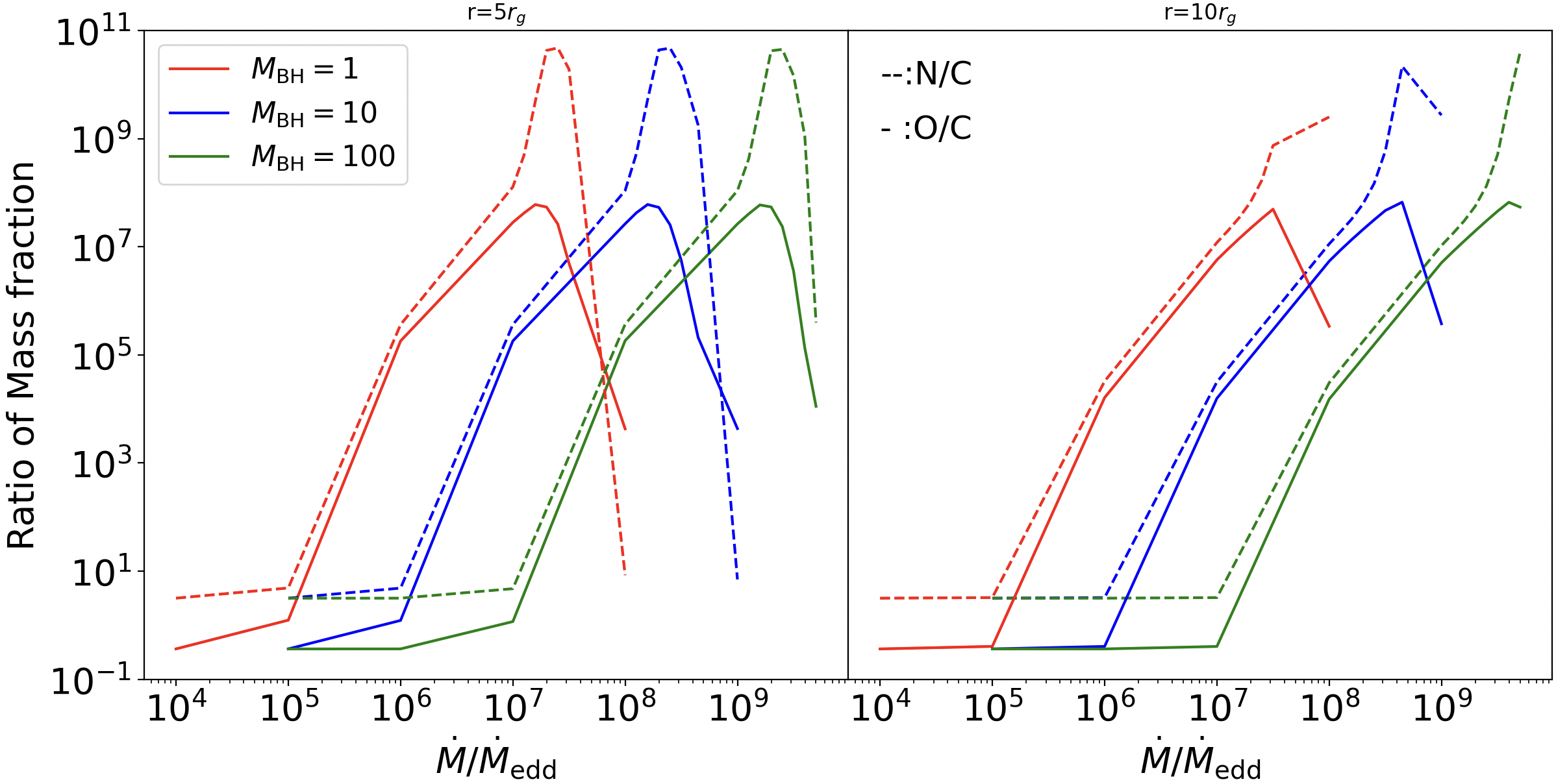Understanding the Nucleosynthesis of Fast Accretion in AGN
https://doi.org/10.1093/mnras/stae2557
It is well known that the accreting material piled at the surface of a neutron star(or white dwarf) is likely to go through thermonuclear fusion. The unstable flashes exhibit a flare in the X-ray band. Why is that the accreting black hole cannot induce such a burst? What is the difference between the black hole accretion and the neutron star? On the other hand, a kind of fast accretion stellar mass black hole is thought to exist in the disk of AGN(named as accretion-modified star, AMS1). Small BH mass with a fast accretion will bring an extremer ambient (hotter and denser). Based on these questions and analysis, we started from the basic advection-dominated accretion flow(ADAF) model and explored the effect of thermonuclear fusion on the fast accretion of BH.
In the energy equation, we considered the heat released by two types of hydrogen burning(p-p chain and CNO-cycle) and Helium burning(triple alpha). Then, with my supervisor’s help, I developed a 4th-order Runge-Kutta method using Python to solve the disk structure. We found that the heat released by fusion is still negligible, mainly due to the low density and the high advection cooling rate. The answer to the previous question is that BH has no clear physical surface to deposit the material therefore cannot make it as dense as those in neutron stars or white dwarfs.
Then, we employed an open-source FORTRAN code to compute the nuclear reaction network. Significant metal enrichment has been reproduced, such as He3 and C12. If these elements are carried by the outflow of the disk, the supersolar metallicity observed in the broad line region may be explained. A mass ratio of N/C and O/C can be seen in the figure.

After graduating only several months later, when I reviewed this work done by me and my previous supervisor, I found it very naive and lacked detail discussion. Many ideas have formed in my brain and I would like to realize them in my graduate study. This work is also part of my undergraduate thesis.
Undergraduate Thesis
Nucleosynthesis induced by the Fast Accretion of sMBH in the Disk of AGN
Thesis is written in both Chinese and English in a Chinese mainland University.
Slides for Thesis Defence
Early Project
Simulation and Visualization of 2D Ising Model.(Written in Chinese)
A Slides for this project in English

An animation for the evolution of a group of lattices on a canvas. In a high temperature, the spin of each of the lattice point flips randomly and the magnetization(roughly the average spin of the lattice) doesn’t show a preferable direction(black is spin down, white is spin up). The probability for the state of the spin in each point is equal. We call this a symmetry. However, if the temperature decreases to the critical point (near Tc=2.269), it chooses a branch of the magnetization, either up or down(in this picture, spin up), and condenses rapidly with a 1/8 power index. When the temperature is sufficiently low, the system condenses and the probability of flipping for each lattice is also low.
Once it chooses a branch to condense and become quiescent gradually, the nearly negligible probability of flipping brings a symmetry breaking.
- Measuring Minuscule Elongation: a project for Chinese Undergrad Physics Experiment Competition(CUPEC)
A highlight of me in freshman.
